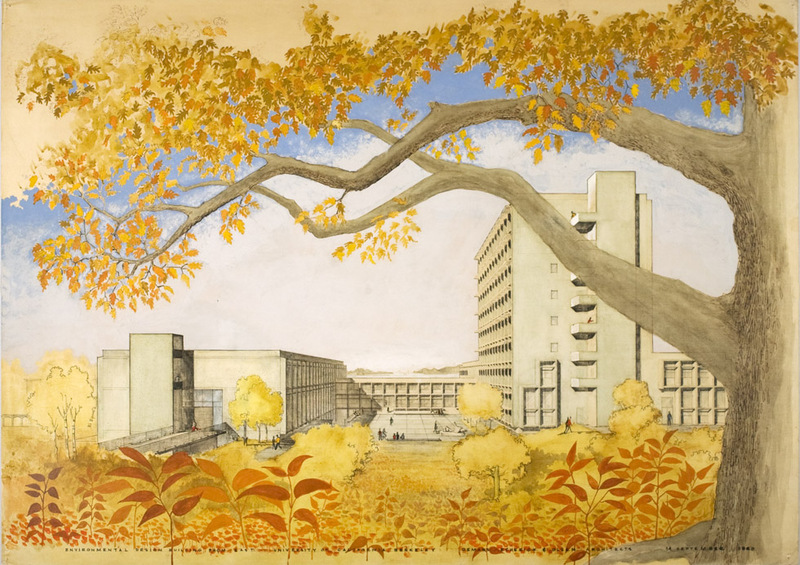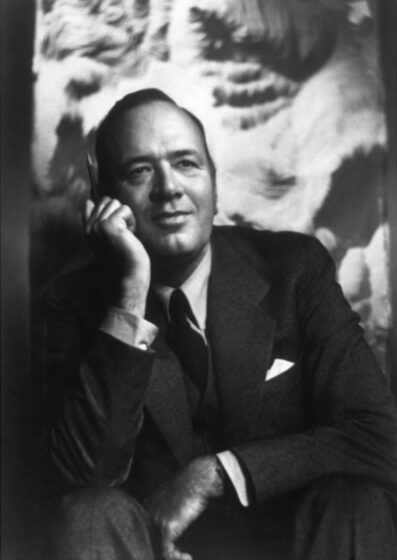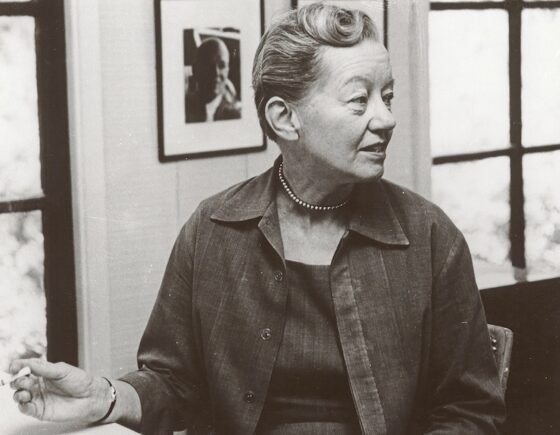History of the College of Environmental Design

The University of California, Berkeley, was founded in 1868 as the first land-grant college in the state and the founding campus of the University of California system. In 1959, the College of Environmental Design was established, bringing together the existing departments of architecture, landscape architecture, city planning, and decorative arts. This multidisciplinary approach to the built environment continues to be a hallmark of the college, today comprising three academic departments — architecture, landscape architecture & environmental planning, and city & regional planning — as well as the Institute of Urban & Regional Development, which serves as the college’s interdisciplinary research hub and houses three academic programs.
In the mid-20th century, no university in the United States had combined the disciplines of architecture, landscape architecture, and planning under one academic umbrella. Two of UC Berkeley’s many game-changing contributions to environmental design were to help develop the actual concept of environmental design, and then to refine it in a college that included all design and planning disciplines, integrating their knowledge and contributions in a way that helps to shape the larger environment.
The idea for such an integration at Berkeley came from William W. (“Bill”) Wurster, the dean of UC Berkeley’s School of Architecture, and Catherine Bauer Wurster, a housing reform expert who taught in the architecture school.
Their plan was to bring together four existing UC Berkeley departments from across campus: the Department of Architecture (founded 1903), the Department of Landscape Architecture (founded 1913), and the Department of City Planning (founded 1948). Encouraged by Chancellor Clark Kerr, they added a fourth department to their proposal: the Decorative Arts Department (founded 1939). (By 1970 Decorative Arts, was rebranded as the Department of Design and later in the decade was reconfigured as the program in Visual Studies.)
This idea was radical for some, and University of California President Gordon Sproul, when approached with the idea, wondered if it was really necessary when things seemed to work just fine as they were. Committees formed, discussions stretched on and on, departments fought to keep a level of independence from one another while combining forces. The final approval from UC Berkeley’s Academic Senate came in 1959.
In the meantime, the name “environmental design” was agreed upon only because no one could come up with a better option that kept all three departments on equal footing. Both Wurster and Bauer initially thought the name was pretentious, but in the end it stood.
Wurster became the founding dean of the new College of Environmental Design and Bauer Wurster was later appointed associate dean.
The new entity with its new name needed a new home. Planning for what would be named Wurster Hall began in the late 1950s; the building was completed in 1964. Wurster championed the idea that the building should be designed by members of the architectural faculty, as hiring an outside architect would indicate a lack of faith in the faculty’s skills. Distrusting unanimity, he relished the idea of having three architects with totally different points of view. His choices were Vernon DeMars, Joseph Esherick, and Donald Olsen.
For two years, from 1958 to 1960, the architects met with a faculty building committee and Louis DeMonte, the campus architect. As many as 20 schemes were developed as departments explored circulation and orientation and quibbled over space allocations and locations, while the different architects argued from their varying perspectives.
One point of agreement was that the new building should have a courtyard, as a carryover from the cherished courtyard in the “Ark,” the previous architecture building (now North Gate Hall).
That was where similarities with the old building ended. Wurster wanted the designers to design what he called a ruin, a building that “achieved timelessness through freedom from stylistic quirks.”
In fall 2020, the college renamed the building Bauer Wurster Hall after finding archival documentation that the building was intended to recognize both William W. Wurster and Catherine Bauer Wurster for their extensive contributions to the founding of CED.
Our Founders
William W. Wurster

An architect and later a professor of city and regional planning, William W. (“Bill”) Wurster (1895–1973) was influenced, among other things, by a Bay Area group of architects, landscape architects, and city planners called Telesis. Telesis had formed in 1939 with the goal of using “a comprehensive planned approach to environmental development, the application of social criteria to solve social problems, and team efforts of all professions that have a bearing on the total environment.” While not a member of the group, he liked its approach.
As a fellow at MIT in the early 1940s, Wurster was instrumental in persuading MIT’s administration to recognize the School of Architecture’s city planning division as a full-fledged and equal department, with the new entity being named the School of Architecture and Planning. He joined UC Berkeley in 1950 as dean of the School of Architecture, where he imagined taking this one step further by adding landscape architecture to the mix. Wurster imagined a college that strengthened each department through joint appointments and interdisciplinary courses, giving students the opportunity to combine studies in the different departments while also focusing on a chosen core area of study.
Wurster had hoped that no university regent would like the building when it was finished, and he got his wish. Although he had proposed not naming the building right away, upon his retirement it was named Wurster Hall in honor of both him and Catherine.
Architectural historian Sally Woodbridge neatly sums up both Wurster’s ideals and the building that was named after him: “As Wurster Hall weathered without mellowing, it reflected Wurster’s opinion that a school should be a rough place with many cracks in it. Perpetually unfinished, Wurster Hall was an open-ended and provocative environment for teaching and questioning.”
Catherine Bauer Wurster

Educator, reformer, and champion of public housing Catherine Bauer Wurster (1905–1964) served and advised three presidents on housing and urban planning strategies — Roosevelt, Truman, and Eisenhower. She drafted legislation for the U.S. Housing Act of 1937, which established the United States Housing Authority (USHA), and authored the influential book Modern Housing (1934), which introduced European modernist housing to American audiences.
Bauer Wurster spent 24 years as an educator, at UC Berkeley (1940–1944, 1950–1964) and Harvard (1944–1950). She became the fifth faculty member and first woman to join the Department of City & Regional Planning at UC Berkeley. A fervent believer in interdisciplinary education, she rewrote the undergraduate curriculum, contributing greatly to its legacy today.
Bauer Wurster was an integral force in pioneering the creation of the College of Environmental Design at UC Berkeley, and would eventually serve as its associate dean.
Deans of the College of Environmental Design
| 2021– | Renee Chow | Dean |
| 2020–2021 | Vishaan Chakrabarti | Dean |
| 2019–2020 | Renee Chow | Acting Dean |
| 2009–2019 | Jennifer Wolch | Dean |
| 2008–2009 | Sam Davis | Interim Dean |
| 1996–2008 | Harrison Fraker | Dean |
| 1988–1996 | Roger Montgomery | Dean |
| 1976–1988 | Richard Bender | Dean |
| 1967–1976 | William Wheaton | Dean |
| 1966 | John E. Burchard | Acting Dean |
| 1963–1966 | Martin Meyerson | Dean |
| 1959–1963 | William W. Wurster | Dean |